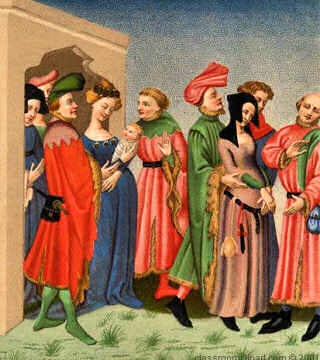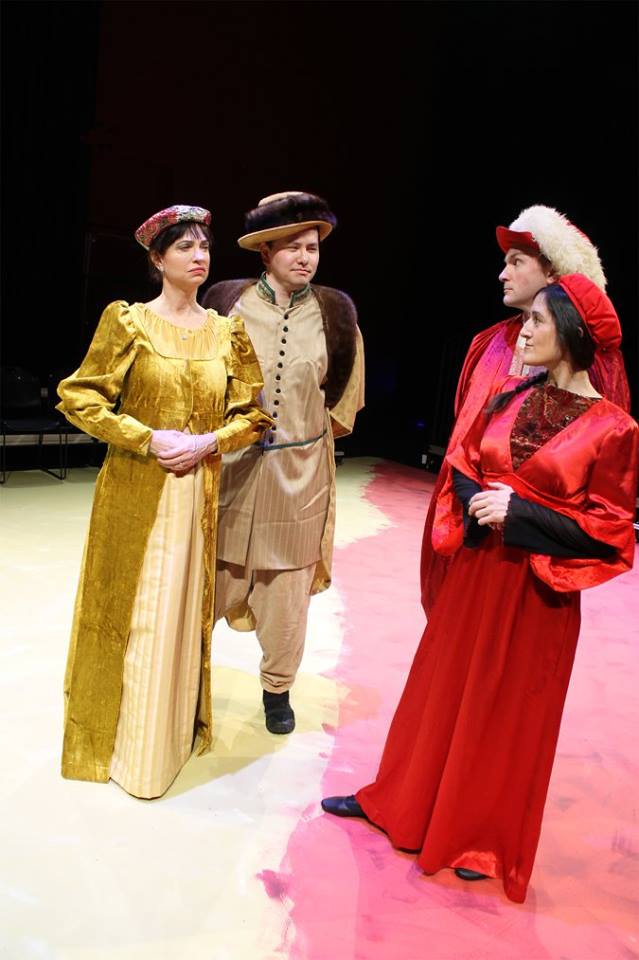Can a classic be unique? (Dramaturgy, part 2)

In fact, although Shakespeare’s plays are among the very oldest “classics” that an American audience is ever likely to see, there is as much or more variation in the way his plays are mounted as in any other playwright’s work.
Public Domain
Written works are protected by copyright for only so long (usually 70 years or so). After that, the author is presumed to have made all the money he or she is going to make on that piece of work. In producing Shakespeare, therefore, our budget is helped by not paying royalties to a publisher.
[However, since we must either 1) purchase printed copies of the script or 2) print our own, there is still certainly some cost involved. In our Dramaturgy post (part 1), we explained how the script was shortened. But it is still 77 pages long, and in a cast of 17 with several production team members, that’s a lot of printing!]Production Choices

In thinking about this very familiar, very dramatic tragedy, we felt it was quite appropriate to keep it in the Renaissance period–a time when ordinary life was much more tenuous and full of danger: disease was rampant (the Plague is mentioned toward the end of the play, as the reason Romeo does not receive Friar Lawrence’s letter); hygiene as a factor in health was not well-understood and life expectancy was short; quarrels were often settled at swordpoint. Warring factions ebbed and flowed in every town. Italy, divided into city-states, was no exception.

I believe that viewing Romeo and Juliet through the Renaissance lens of a brief, dangerous and rather arbitrary world, makes their story more understandable: a couple living in that time could perhaps actually meet, marry and kill themselves within the space of days. They grasped at love, knowing that life was fickle.
How is this production unique?
We don’t claim to be doing something no other company has ever done…but we have made choices which are fresh for us and fresh insofar as any other production of Romeo & Juliet any of us has seen. Shakespeare is new for afO, and working in the round is new for most of the cast. We wanted to make it a very intimate experience for the audience, one which would draw them into the action, making them feel literally a part of the tension.
We also wanted to underscore both the senseless nature of family feuds (illustrated in our wordless Prologue) and the ultimately redemptive message of Shakespeare’s ending (as seen in the unspoken Epilogue). Not every one of Shakespeare’s tragedy’s has a ray of hope in it, but this one does. It has taken tremendous, heart-breaking cost, but these two families will move forward in peace.
Other Challenging Elements

This is not the first time that we have chosen a piece which includes a scene where dance plays an integral part in the drama. 2012’s Emma required several authentic Regency dances. Kimberly Bronson, of Kinetic Revelation, has researched Renaissance dance to create two lovely pieces to serve as backdrop to the lovers’ first meeting.
Finally, because of the choice to give each family a specific color palette,most of our costumes were made for this production, an undertaking unusual for afO. Kudos to Deanna Deturk, and her assistants, Christine Newman-Aumiller and Catharine Cwanek, for this. And of course, those colors are echoed on the stage. I am amused to note that this, one of the largest and most ambitious productions we’ve ever mounted, is also the only one I’ve ever directed without a single piece of furniture in it!


